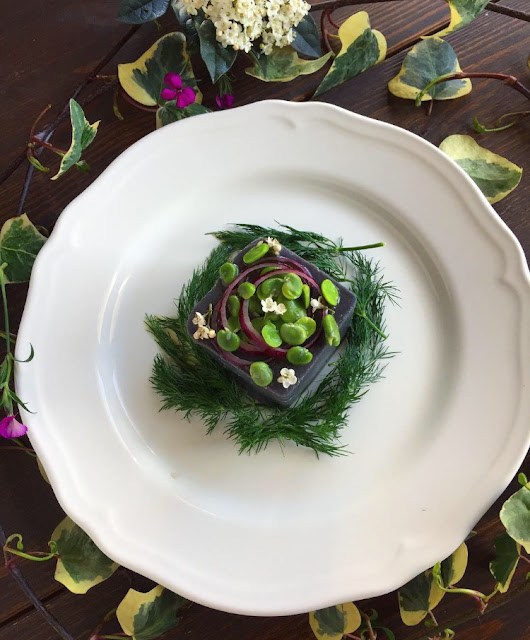It is spring and the farmers' markets are filled with wild herbs like wild chicory, wild asparagus,common mallow, rumex, nettles, dock and many more. It is my favorite time of the year. Wondering around the local market for hours, looking at all the fresh produce makes me happy. After a long winter spring greets you with its many gifts. I shop and while doing so can't help but to organise my next dinner party in my head, new recipes, who to invite and so on. At the market usually old ladies or couples sell these herbs they hand picked themselves. And I prefer to buy from them since they are still trying to make a living out of this. Although life is tough and especially tough on them, they are content and always smiling.
Usually these herbs are blanched and served with garlic and olive oil or they are served with yoghurt as mezes or salads. Herb fritters are made or simply they are added to eggs to make herb omlets. I especially like wild chervil which we call goose feet in Turkish. The sweetness of kohlrabi goes well with the onion-parsley like flavour of the wild chervils.
Ingridients:
2 Kohlrabi
1 potato
2 eggs
1/4 cup milk
1 cup flour (+if necessary)
1/4 bunch meadow parsley(corky-fruited water-dropwort)
50 g grated kashar cheese ( yellow cheese not aged)
1 teaspoon baking powder
salt&pepper
chives
Peel the kohlrabi and potato.Grate and mix them in a large mixing bowl. Add eggs and mix to combine. Add flour and milk to make a batter. Season with salt and pepper. Add chopped parsley.
Add oil in a large skillet that is just about 1-1.5 cm high.Heat oil to medium-high heat in large skillet. When oil bubbles when you dip your wooden spoon add the fritters, one heaping spoonful at a time. Flatten a little so the fritter is flat not round. If you want a perfect circle you can put round metal molds in oil and cook the fritters in them. When one side is done simply lift the molds and turn the fritters.
Control the heat often and check the doneness. Turn when golden. If they are browning too fast turn your heat down.Drain on paper towel. Put some salt on top add chopped chives. You can serve them with a dipping sauce made with Turkish Yogurt and chopped wild chervil drizzled with olive oil on top.






























